Japanese knives are so popular nowadays, especially in western kitchens. These are some of the best knives on the planet, as they originated in Japan. Western chefs prefer these best Japanese knives in their daily usage.
Blade and sword-making art of Japanese has a long history. They have a rich history of making these knives, Samurai and Katana Swords that date back to the 15th and 16th centuries of Imperial Japan.
At that time, only the Nobel persons and soldiers of Japanese fleets were allowed to make these Swords, and knives, because they were very expensive, and were considered an expensive thing for locals.
Later, when people all around that time of Japan got to know about such knives, they used to exchange their local cuisine with their traditional knife-making skills. Now, the best Japanese knives are made using those techniques.
There are a whole lot of Japanese knife models, & each of them owns its purpose. So, here in this guide, we will be taking a closer look at the Japanese knife types, along with their individual features, benefits, usage, and limitations as well.
Japanese knife types | Best Japanese knives & types
Alright, so here are the best, popular, & widely used knives in the western kitchens. There are still a lot of other knives besides these ones, but those knives are not a handful, and pretty much reliable for western chefs like these knives.
1. Santoku

The most popular, and the commonly known Japanese knives in the western world. It is a Japanese-style version of the western chef knives. This knife owns a very sharp, versatile, and maneuverable blade out of the box.
For every type of Japanese knife, they own a name and the meaning behind their names. The word Santoku is of course a Japanese word, which has a meaning of three uses. As the name suggests, this knife is usable for three different uses.
You can use these knives either for fish, vegetables, or meat. This can perform three different options easily that includes chopping, slicing, as well as rocking in up & down motion frequently.
This has a really straight blade profile, that holds a very slim spine throughout from its handle’s bolster towards its edge. Honestly, this is an all-purpose knife for various professional, and household tasks as well.
2. Gyuto
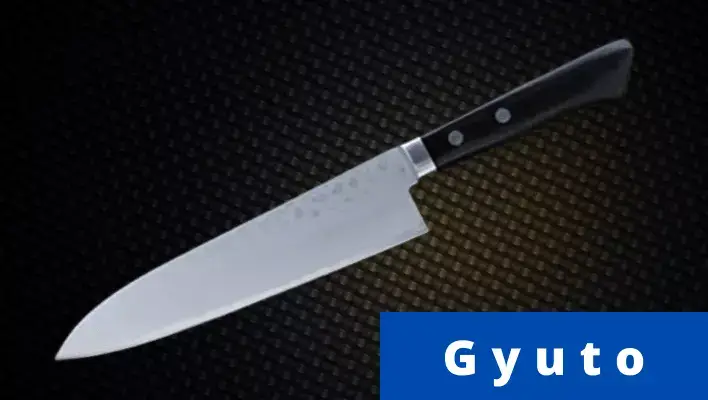
So, Gyuto has taken 2nd spot on this list. This is another good Japanese boy, with some genetic similarities to both Santoku, and western chef knives. In the western world, these are some of the best replacements for chef knives.
The Japanese Gyuto knives hold a small to average size blade, that makes a very solid impact on ingredients, and they are also pretty balanced in the hands. This knife is widely used in cutting vegetables, fruits, & meats like chicken, and steaks.
This knife provides you with a very maneuverable blade in terms of chopping and rocking as well. Due to its contoured cutting edge, and comfortable handle at the other end, the knife becomes very easy to glide even in large vegetables.
Its durable, and very sharp point at the edge makes you take deep, and fine cuts whether it is a complex piece of meat, or it is a big vegetable. These knives also come in a flexible blade, depending upon the type of steel blade core.
See also: Best Japanese Chef Knives
3. Nakiri
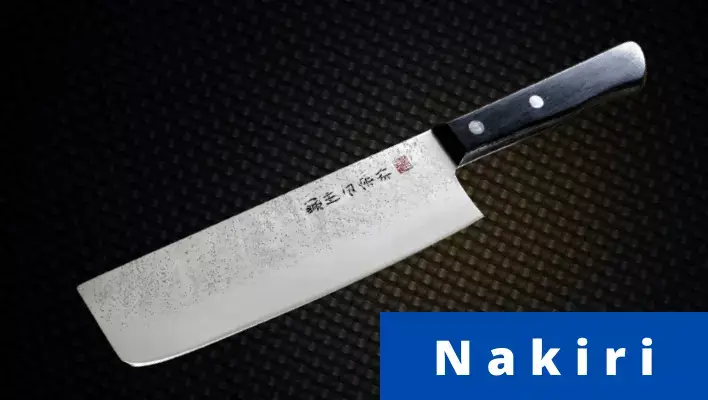
This is the traditional Japanese vegetable cutting knife that has an edge over the other western knives. The knife holds a rectangular profile blade, which has a higher spine width, along with the length.
In fact, the length of Japanese knives can also vary from model to model, and use. But, you should always bear in mind; the longer the blade the more versatile the cutting could be, & the longer it is, the handling will take more practice.
With Japanese Nakiri knives, you can cut down mostly long, big, and deep vegetables that require some impact, and stability during strikes. These knives are mostly used for carrots, radish, watermelon, cabbages, and various other veggies.
These knives are sharp enough that you can also use them to cut onion sort of stuff as well. Plus, its edge is almost straight but slightly contoured from the edge part, which gives you a clearance for a rocking style of chopping at precision.
See also: Best Japanese Vegetable Knives
4. Petty

This is a Japanese version of western style paring knives. These knives are not just limited to certain tasks or specific stuff, and you can consider these knives as household, and assistant to other knives such as Honesuki knives.
Most of the time, this knife is used for cutting smaller ingredients that could be anything from veggies, to herbs, fruits to meat, and dairy to poultry products. However, they could be a good one for chickens & meat complex joints.
Lastly, this has a tiny little blade as compared to other Japanese knife types but owns almost the same sharpness. You either as a professional, casual, or beginner chef can use such Petty knives in your cutting tasks.
5. Kiritsuke
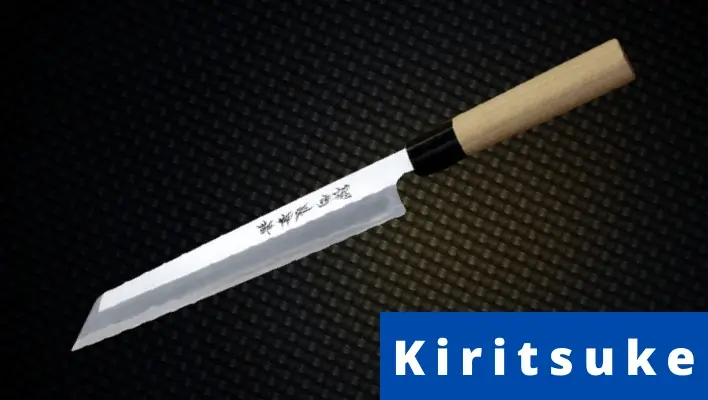
It is a widely used knife mainly meant for slicing the ingredients. You can use a Kiritsuke for slicing any sort of ingredient with little to no effort. Mainly, these knives are a great alternative to sashimi knives in various Japanese restaurants.
This all-purpose knife is a premium Japanese knife, which is somewhat expensive as compared to western knives. Due to their sharp blade, traditional design, and long yet versatile blade, these knives stand out quite decent.
You are not just limited to fish and seafood sort of stuff. With these knives, you can also use deep, fine, and accurate cuts inside a lump of meat, and any other stuff. This holds a very sharp, and single angle cutting edge in the end of its blade.
6. Usuba
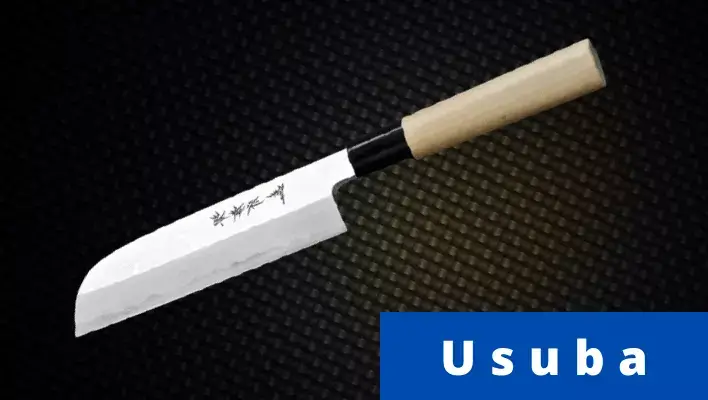
Usuba officially belongs to those knives that only come in a single bevel blade. The other ones by far on the list can be available in both single, and double bevel blades. But, Usuba only comes in a single-sided blade.
Now, there are a lot of types in Usuba itself, when it comes to blade profile. Still, each of these types holds a very sharp, and thin blade out of the box, but the purpose may differ from each other. It is a vegetable, & fish knife mostly.
Just like Nakiri, these knives also hold a rectangular blade, but you can easily make a difference between Usuba, and Nakiri. Usuba has a rectangular blade, which is slightly contoured, & less in length than a Nakiri.
7. Honesuki
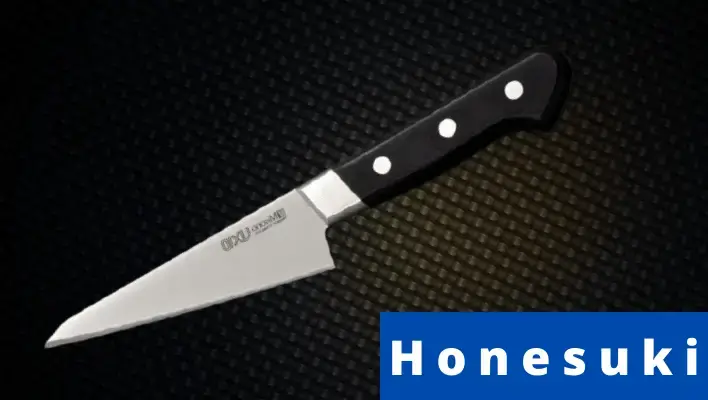
This is a Japanese boning knife type, which is slightly different from western knives. These knives are offered in single bevel, & sometimes in double bevel for both handers, from some specific knife brands.
Unlike other knives, this knife is completely in terms of profile. It has a gradually wide or thin blade, that ultimately leads towards a triangular sort of edge in the end. The spine comes straight forward, but with a jump to join the edge of it.
These knives are ideal for deboning poultry, and chicken sort of stuff. Its triangular edge holds durability that resists chipping and assists a lot in complex joints inside the chicken’s body. Overall, this is a well-balanced and sharp knife.
8. Sujihiki
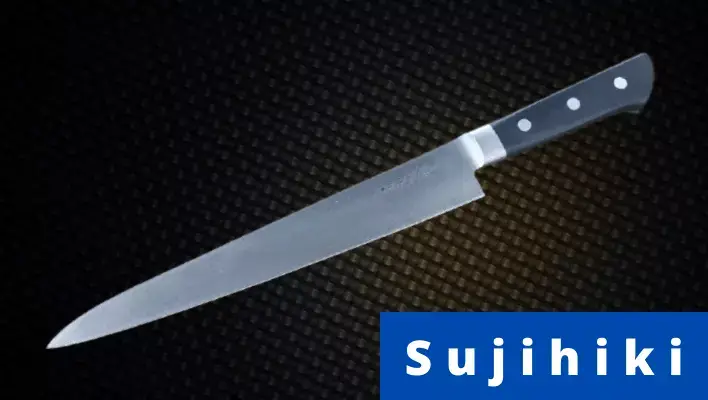
If you are fond of western slicing knives, then the Sujihiki is not going to be a unique boy for your countertop. Again, the design is almost the same, but sharpness is magnificent in its Japanese version known as Sujihiki.
It is a very long blade, that is made up of high carbon steel because it helps in making the blade pretty thin. Being a thin blade, this knife is flexible as well, and it doesn’t stress out in deep yet hard cuts.
Its edge has got a shape almost the same as Gyuto, but it still holds a good retention to stand out. The only difference is in its blade’s spine and edge itself. Both the edge and spine are gradually contoured to meet its edge in the end.
9. Deba
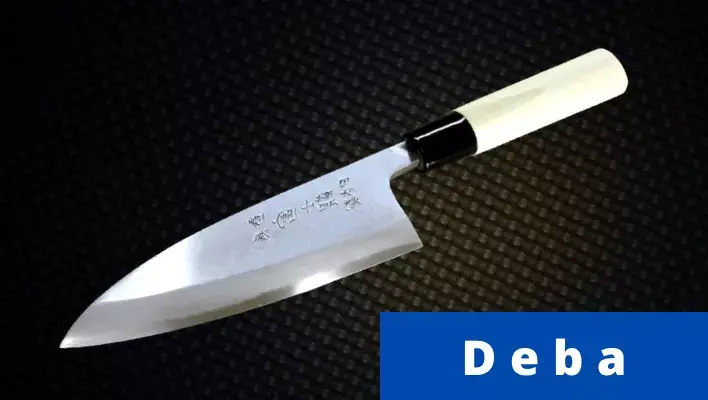
Deba knives are popular and one of the best Japanese knives for filleting a fish. This knife can also work on bones, as fish doesn’t hold very hard, and big bones inside its column. So, it doesn’t lose its sharpness much easier.
This Japanese butcher knife comes in a single bevel blade. So, you need to be a right-handed chef. However, you can also find double bevel filleting deba’s as we have reviewed some of these earlier in its own guide.
Its blade has almost the same shape as a Santoku, but it comes in less length, with a wide spine of the blade. On this blade, the spine is relatively thick, to add some stability as you are doing powerful stuff as butchery is a rough cutting.
10. Yanagiba
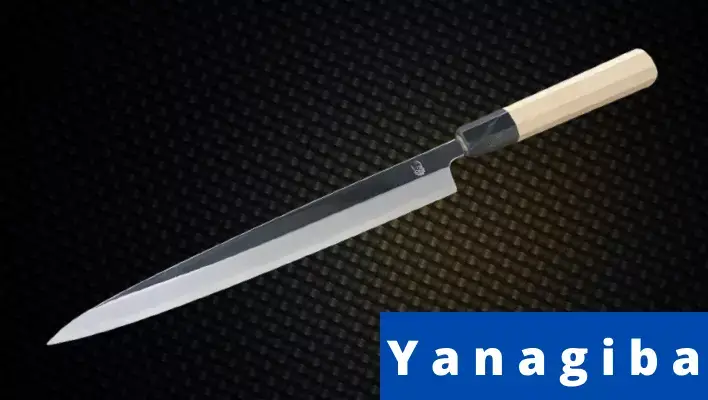
These knives hold a pretty long blade, that could be up to 16-inches in length, or even longer than Sujihiki slicer knives. This knife is specifically used as Sashimi knives to cut fishes like Salmons, and sometimes Trout as well.
The knife basically originated from Katana swords, as they are long, sharp, and slim blades. It owns a very versatile blade, and the edge retention is also pretty phenomenal. However, the blade has an almost Kiritsuke style single-point edge.
With this long blade, you can now take deep, and very long cuts inside the meat. You can now butcher down the entire fish in a matter of minutes. Not only the blade is versatile and long, but the handle is also long, and comfortable.
11. Takobiki
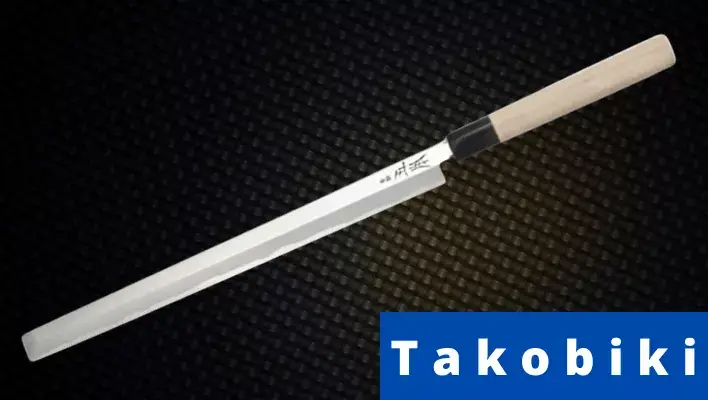
This Tokyo-oriented knife is a sibling of Yanagiba, and Sujihiki knives in terms of purpose. It is a slicer knife that comes in a very long blade as compared to kitchen and chef knives. The length could be up to 16-inches in some custom cases.
These knives own a very sharp blade, which is basically a single bevel blade. With these blades, you will be dealing with fish mainly. Moreover, it can also be used as Japanese Sushi knives out of the box.
Takobiki can be differentiated through its completely rectangular blade, which is very thin in size. The blade is very versatile, that has got a square edge in the end, & a good bolster support on the handle’s side.
12. Pankiri

Pankiri is a Japanese version of bread knives, which is commonly used in the western world, especially in western European countries. These knives are meant for slicing bakery items like buns, breads, & donuts due to their shredded blades.
The knife owns very rigid, and durable teeth that don’t break or bend easily as you are using them in bread, and soft cuttings. However, these knives are slightly challenging when it comes to resharpening them.
But, you can use knife sharpeners instead of using whetstones for these sorts of blades. When cutting breads, you can easily and precisely cut them without messing with a very decent crust on top of those breads.
13. Bunka
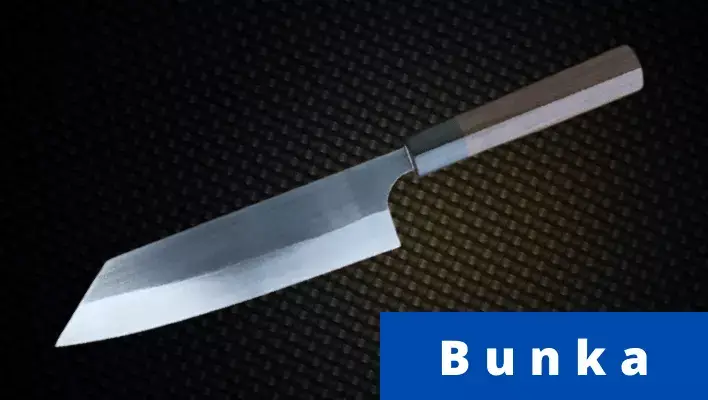
Bunka is commonly known as a knife assistant, as this doesn’t come for any dedicated purpose. Most butchers use this knife to trim fats, clean the meat, and use it where the other boning knives are hard to reach or in the complex points.
This general-purpose knife owns a triangular blade that has almost the same profile as a boning or Honesuki knife. The only difference is its weight, size, and double bevel blade that is still sharp in its cutting edge.
14. Reito

You might be thinking that Japanese traditions are old and they do not offer any knife to deal with frozen stuff. But, we are here to kill this myth as Japanese knife manufacturers also offer you a type of Japanese knives known as Reito.
This knife can be used on frozen products due to its stainless steel core blade that prevents chipping, and eventual rust. It doesn’t come in a specific shape, but we can give you just an idea of its profile.
Sometimes, it comes in a long blade, with handles on both sides, & sometimes it also comes in a completely shredded blade, just like a bread or butter knife. But, this knife is more durable and slightly contoured from its spine part.
The Bottom Line | Japanese knife types
All of us clearly know that Japanese knives are a few of the sharpest knives all around the world. But these knives come in a couple of different types, which makes it hard to choose the best Japanese knife type for a chef.
Nowadays, the best Japanese knives are mostly manufactured in Seki, Tokyo, and Sakai city. Out of these cities, Sakai alone contributes more than 80% of the total manufacturing. Japanese knife brands like Tojiro, Miyabi, & Shun are based here.
To kill your curiosity, we have created this guide to the Japanese knife types that consist of these knives. After going through this guide, we are assuming that you will be confident about your requirements, & matching knife.